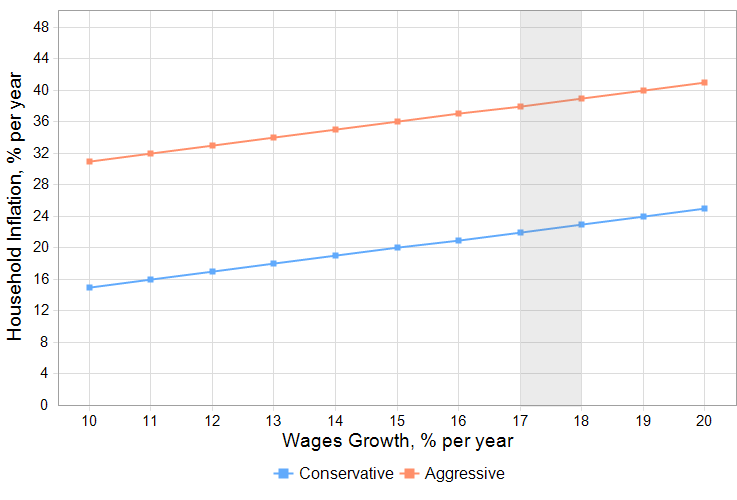Means of Financing the war
As Russia continues to grapple with prolonged economic pressures stemming from its wartime footing and international sanctions, the combined resource flow imbalance (Imb) in 2025 is estimated at $160 billion to $300 billion per year. Over three years of war, nearly all strategic government reserves have been depleted, leaving the state with one primary option to finance its military expenditures: extracting resources from corporate and private deposits. To address these ballooning expenditures, Russia employs three main mechanisms: Government Bonds, Increased Taxation, and Inflation.
Government Bonds
In 2024, approximately $60–90 billion was raised through bond sales, with significant participation from households and private institutions. While this approach avoids immediate taxation, it increases future financial obligations, as the government must repay these debts with interest. On average, the amount collected annually from the Russian population and domestic investors via government bonds is estimated at $75 billion.
Increased Taxation
The Russian government has implemented sweeping tax reforms targeting both individuals and corporations to boost revenues:
Income Tax Reforms: Estimated to generate an additional $6 billion annually.
Corporate Tax Hikes: With corporate taxes increased from 20% to 25%, an additional $18 billion was collected in 2024.
In total, the combined amount extracted from the population through taxation to finance the war amounts to $24 billion per year.
Inflation
After accounting for the resources extracted via government bonds and taxation—approximately $94 billion per year—the remaining resource gap of 136 - 94 = $42 billion to 315 - 94 = $221 billion per year is addressed through inflation. The equation describing this process would look like this:
M + S + E = B + T + (Hinf - Wgrw) * C / 100
Where
M - extra military spending (96-120 B/year )
S - effect of sanctions (40-80 B/year)
E - reduced exports profit (0-115 B/year)
B - government bonds sale (60-90 B/year)
T - extra money via increased taxation (24 B/year)
C - public spending (950-1000 B/year)
Hinf - household inflation (% per year)
Wgrw - wage growth (% per year)
The expected Household Price Inflation (Hinf) can be calculated as:
Hinf = Wgrw + 100 * (M + S + E - B - T)/C
The chart below shows the household inflation (Hinf) as a function of wage growth (Wgrw) for two sets of input values: Conservative and Aggressive.
Household Inflation as a function of wage growth rate
Conservative: M = 96; S = 40; E = 0; B = 60; T = 24; C = 950
Aggressive: M = 120; S = 80; E = 115; B = 90; T = 24; C = 1000
The Medium line aligns well with the current trends observed in Russia: the wage growth rate in 2024 was around 17-18%, and household inflation, as reported by ROMIR (and lately by official sources) stands at approximately 21-22% per year. The chart suggests that household inflation could increase by as much as 37% if oil prices decline to $55 per barrel, assuming the wage growth rate remains unchanged.